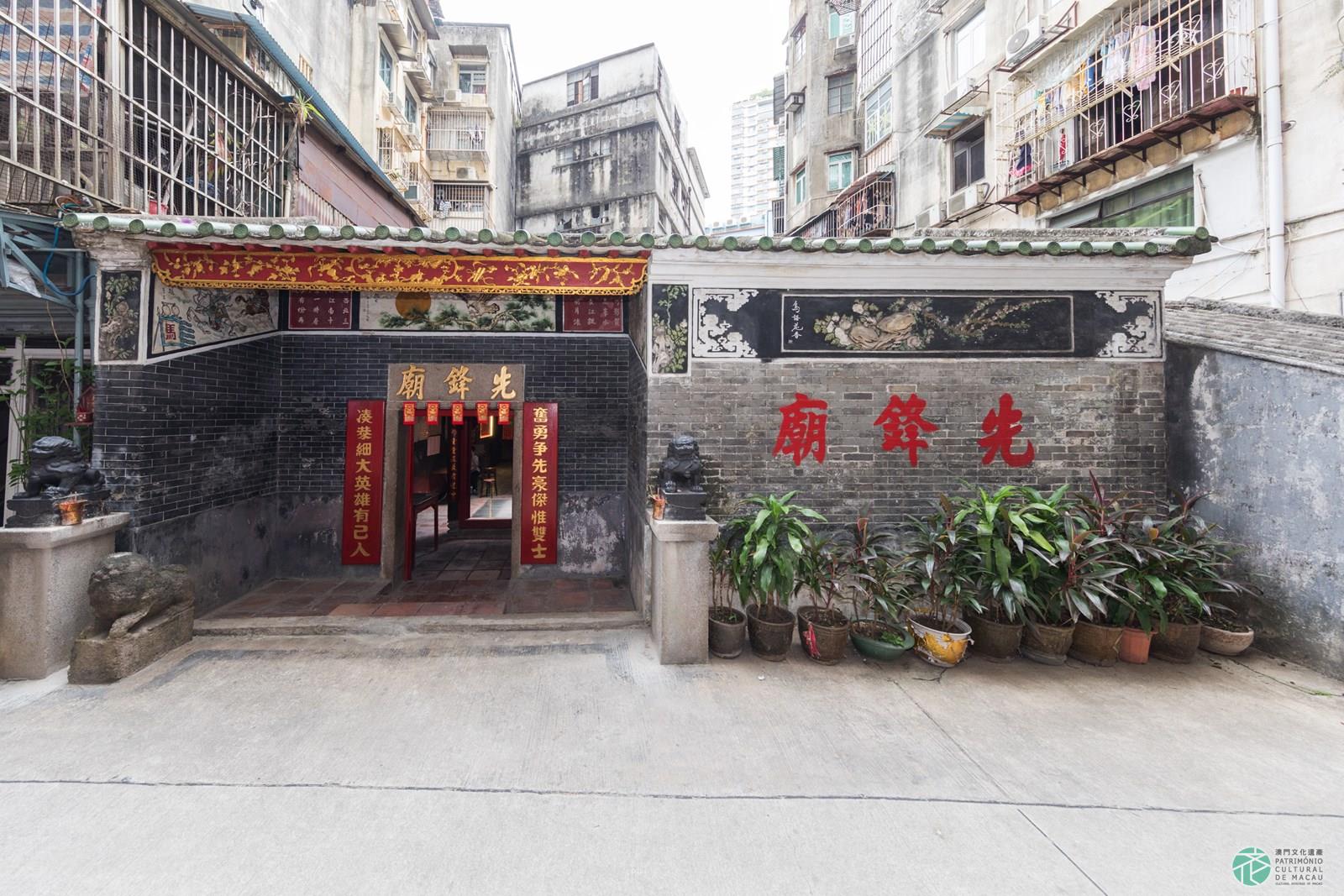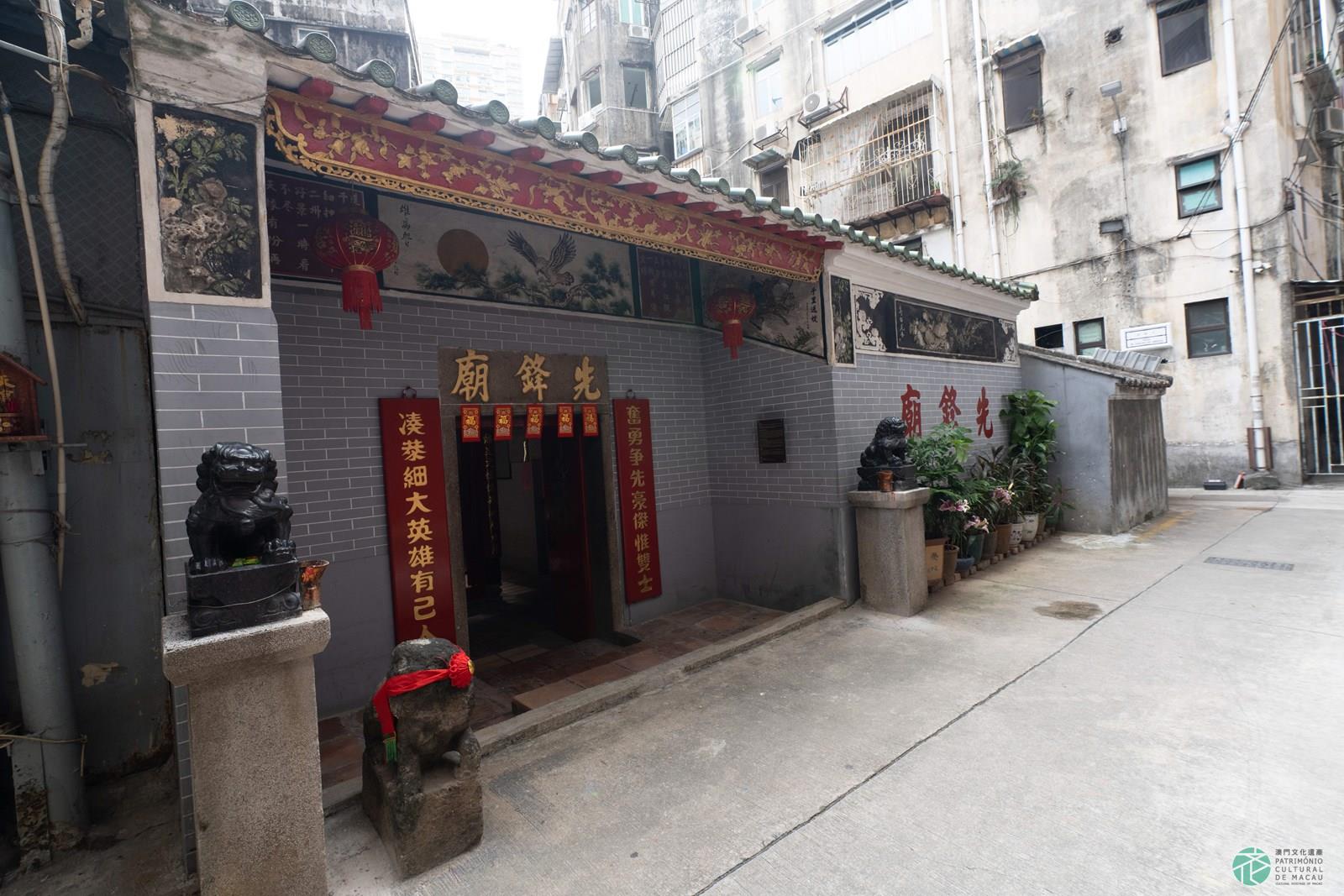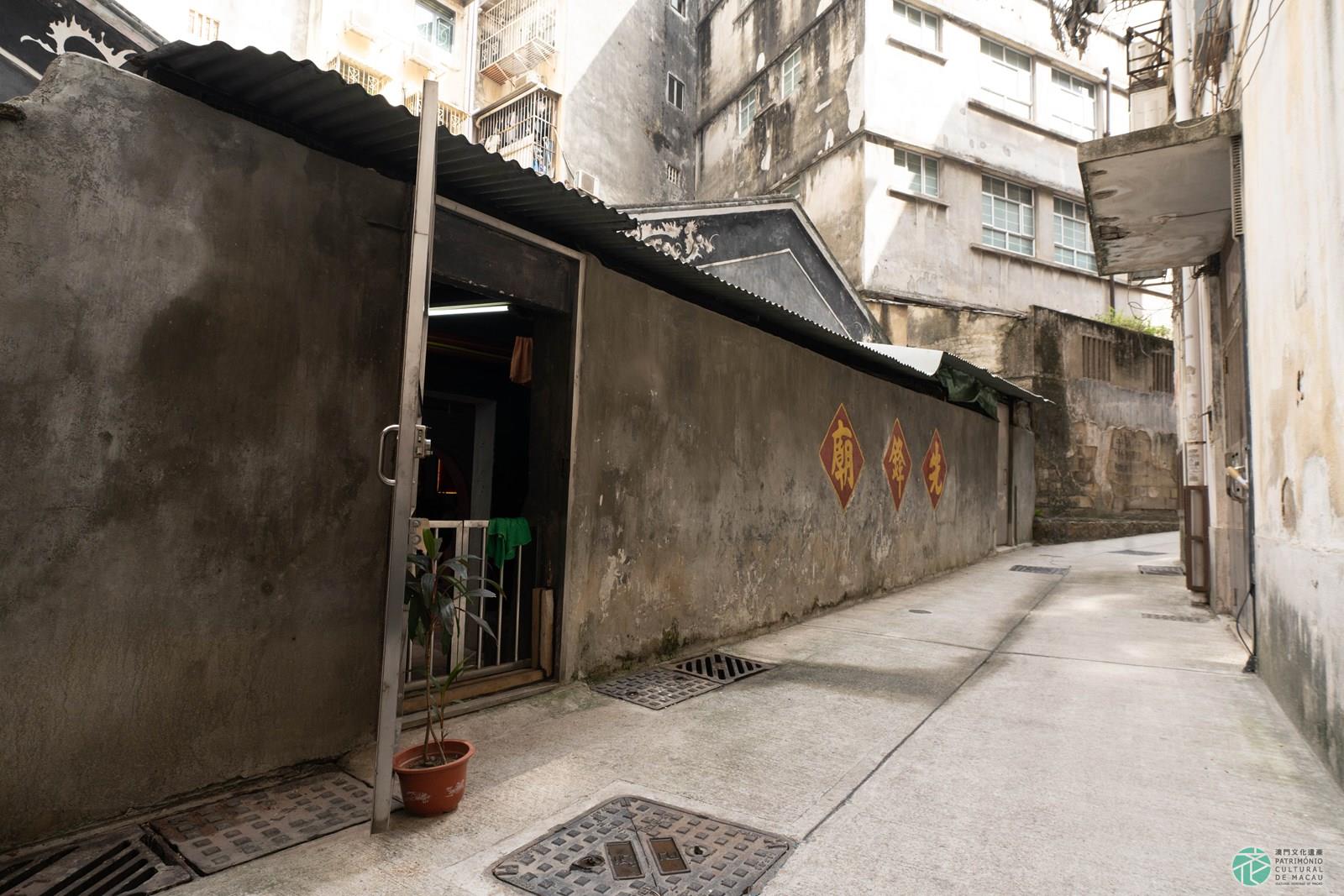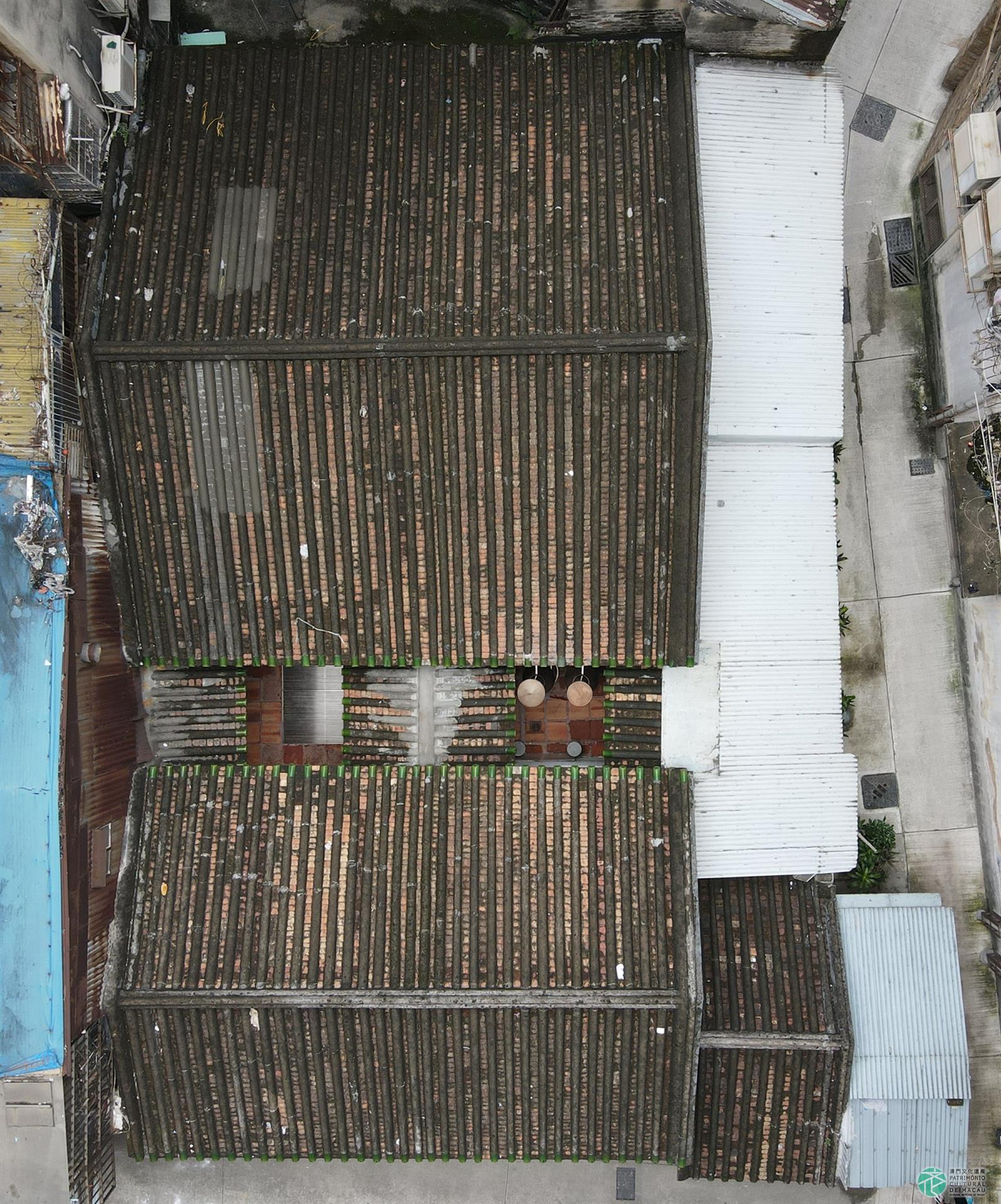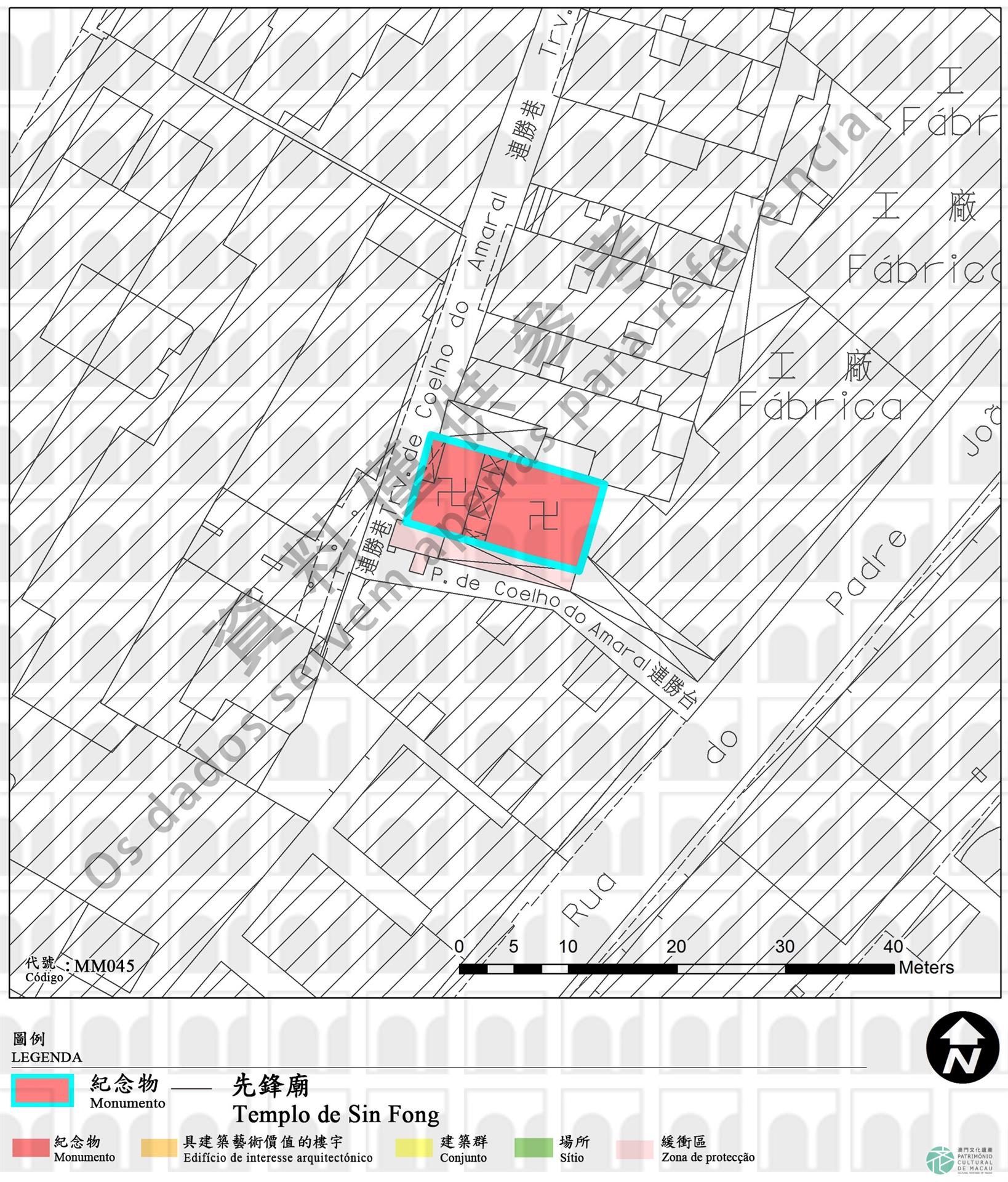As was recorded in the Investigation of 13 Villages in Xiagongchangdu of Xiangshan County from the seventh year of the reign of the Daoguang Emperor (the year of 1827), “there is a Sin Fong Temple at the side of a protection palace at the foot of the Lotus Hill on a small road, near the Mong-Há garrison area”. The Sin Fong Temple, located in the Travessa de Coelho do Amaral, was thus built no later than 1827 (the seventh year of the reign of the Daoguang Emperor) [1], boasting a history of over 190 years. The oldest extant object in the temple is an “umpan” (literally “cloud plate”) hung in the main hall, which is carved with the Chinese characters for “the 11th year of the reign of the Xianfeng Emperor” (the year of 1861).
Stretching from the southeast to the northwest, the Sin Fong Temple was formerly located to the west of the border of the Mong-Há Village. In the early 20th century before land there was reclaimed, it was in a coastal area. Due to its location in the vicinity of the garrison area of Qing soldiers and the Portuguese military camp[2], the temple was also known as the “riverside village in the garrison area” [3] according to street records of the early 20th century. This part of history can be confirmed by the “memorial tablet of happiness and morality for the garrison area” at the side of the Sin Fong Temple. The temple was located on Estrada de Coelho do Amaral before the road changed course in the early 20th century to what it is today[4]. Due to urban development, and the construction of large scale buildings in the surrounding streets, the urban presence of the Sin Fong Templewas dwarfed. Together with the ancient temples flanking Avenida do Coronel Mesquita, the Sin Fong Temple has witnessed the history of the Chinese community near the Mong-Há Village and the lifestyle of local residents. It is also a material remain after Estrada de Coelho do Amaral changed course and the coastal area was reclaimed. The temple is significant for studying the history of the then Chinese community and the layout of villages, as well as for Macao’s planning of its modern city streets.
The Sin Fong Temple assumes an air of antiquity and solemnity with short eaves, small tiles, low halls, and low altars. In a style of traditional Chinese temples in Macao, it has three connected components, namely a main hall, a side hall and an attached space. The main hall is dedicated to General Vanguard, while the side hall to the Dragon King of the East Sea. General Vanguard is a deity to protect against disasters and danger, the worship of which is not uncommon nationwide. The worship of the Dragon King of the East Sea that is housed in the side hall of the Sin Fong Temple has something to do with fishery, which carries with it the good wishes for safety on the sea and bumper harvests. On the birthday of General Vanguard on the sixth day of the sixth month of the lunar calendar and on the birth of the Dragon King of the East Sea on the 17th day of the ninth month of the lunar calendar, the Sin Fong Temple never fails to receive a large number of worshippers. It is important for studying the lifestyle and spiritual beliefs of the then Chinese community and a good example of studying folk Chinese customs in Macao.
[1] [Qing Dynasty] Zhu Huai, Short Records of Macao, Beijing: National Library of China Publishing House, 2014, p. 34; Tang Kaijian, Discoveries from the Investigation of 13 Villages in Xiagongchangdu of Xiangshan County in the Seventh Year of the Reign of the Daoguang Emperor and Historical Values, Journal of Macau Studies, Issue 63, 2011, p. 118-154.
[2] From a map of 1886, the Sin Fong Temple can be seen located outside the “Mong-Há Gate”. Wu Hongqi & Zhao Xiangjun, Preliminary Studies on Mong-Há and Villages Nearby, RC, Issue 77, 2010, p. 188.
[3] Confeccionado por Euclides Honor Rodrigues Vianna, Cadastro das vias publicas de Macau, Macau: Typographia Noronha & Ca, 1906, p. 147.
[4] Confeccionado por Euclides Honor Rodrigues Vianna, Cadastro das vias publicas de Macau, Macau: Typographia Noronha & Ca, 1906, p. 4. Organizado por Augusto de Souza Barbeiro, Cadastro das vias e outros lugares públicos da cidade de Macau, Typographia PO MAN LAU - Macau, 1925, p. 70. Cem anos que mudaram macau, Macau: Edição do governo de Macau, 1995, p. 30.
